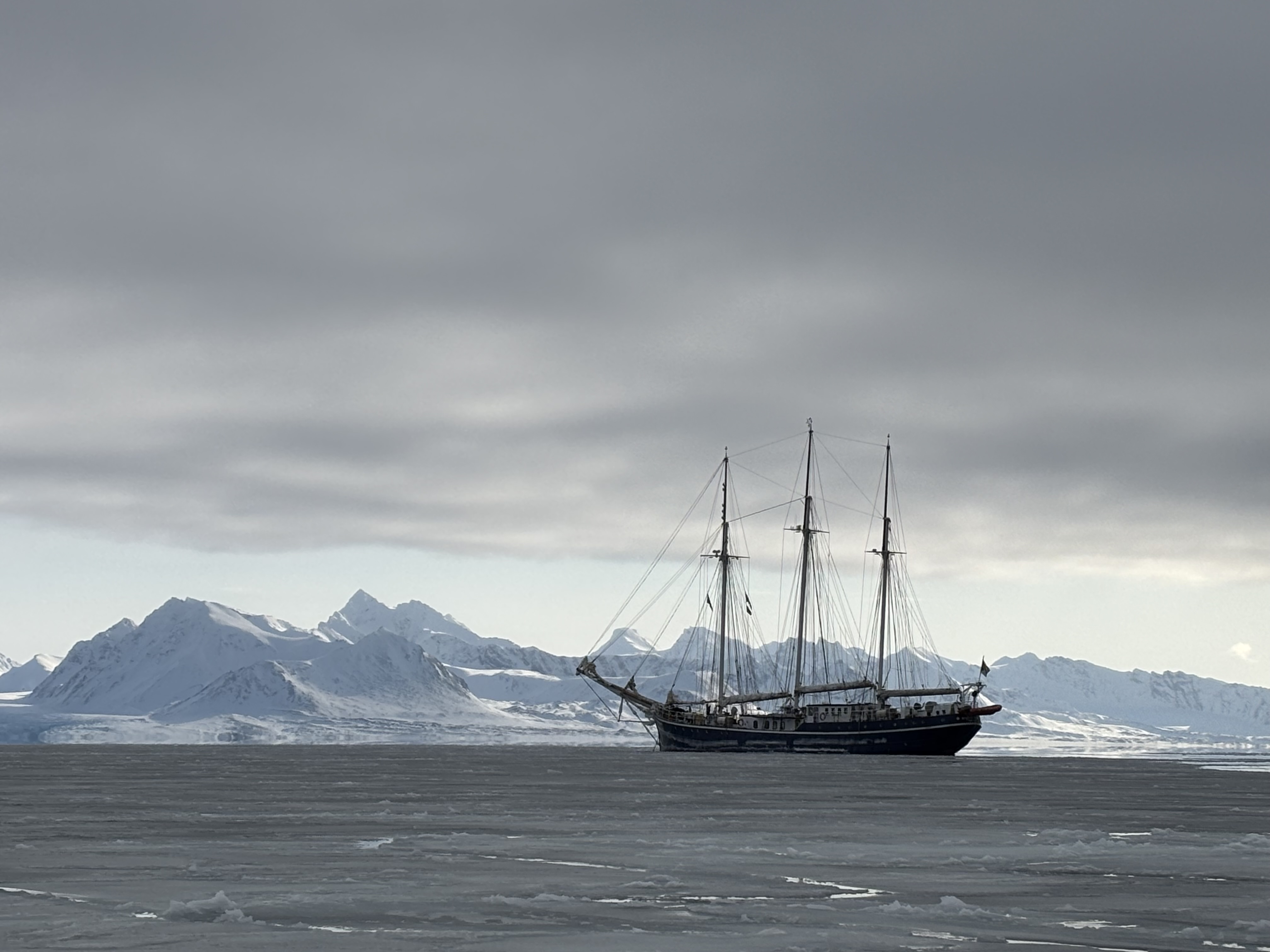Apathy and Emergency in the Arctic Circle
November 24, 2025
by Lisa WIlliamson, MPhil 2022
In 2024 I applied to the Arctic Circle Expedition Residency in hopes of exploring this question: Does the absence of emergency in the U.S. over melting ice have to do with the way time is kept and spent? Maybe the general population is apathetic because the problem is over there and not here, or because some believe time ceases to continue when the soul is liberated from the body and the body returns to dust.
When I received my acceptance, more questions consumed me. How will I use my time? How will I waste time? What is time? And how in the world am I going to measure time under the midnight sun when an overcast day means no shadows and the clock on my cellphone glitches below 1°F?
I practiced different forms of timekeeping including clapping hands, tapping feet, counting inhales and exhales, counting steps, and how many times I chewed my food before swallowing. I made drawings and maquettes of measurement devices like sundials and sand glass and water clocks. I wrote pages about kairos, the mythical time beyond the ticking clock. I dusted off Bergson and read up on Berentz and Amundsun.
I traced the word apricity, a word that Google deems obsolete, and yet it means to feel the warmth of the sun on your face in the middle of winter. And I wonder if we lose winter, and snow and ice, if we also lose apricity. And what is apricity if not hope, and when did hope become obsolete?

Twenty-eight of us boarded the 150-foot schooner Rembrandt Van Rijn from Longyearbyen, Norway, with romantic ideals of a wintery landscape and narwhals lurking under the waves. However, the reality is that nothing can prepare you for the inhospitable environment of the Arctic. Cold that steals the moisture from your mouth leaving you gasping for breath, armed guides to mediate between humans and polar bears and walruses, and of course the ice. Deep turquoise, salty islands, slick blocks and bergs, moaning and cracking glaciers emitting puffs of snow as they prepare to calve, and the shrinking horizon of pack ice that, if you watch closely enough, rises and falls like the chest of a sleeping giant.
Artist Georg Baselitz says “when you are irritated you pay closer attention.” And the irritant was present even if it was hard to see over a pristine frozen tundra. Fishing nets and buoys encased in ice, remnants of retreating glaciers powdered with the most recent flurry, extreme skiers from the U.S. in red knit caps complaining about being cold even as the temperature continues to rise. Railway time tricks us into thinking there are delineations to each day, and global warming is tomorrow’s problem. But the midnight sun signals the emergency is now; the emergency is durational and psychological. It’s kairos, a critical moment that can’t be measured, and yet soon all we will have left of Arctic ice will be tourist photos.

